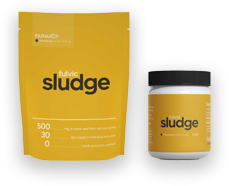
Tell me about the mycotoxin Sterigmatocystin
Sterigmatocystin is a mycotoxin produced by several species of Aspergillus and Penicillium fungi. It is commonly found in food and feed products that have been contaminated with mold, such as corn, wheat, barley, soybeans, and peanuts.
Sterigmatocystin has been shown to be toxic to the liver and kidneys in laboratory animals and has also been linked to an increased risk of certain types of cancer, such as liver and lung cancer. However, the level of risk to human health from exposure to Sterigmatocystin is not well understood and more research is needed to fully understand its potential health effects.
Like other mycotoxins, Sterigmatocystin can be controlled through good agricultural and storage practices, such as proper drying and storage of crops, and by regularly monitoring food and feed products for contamination. The regulation of Sterigmatocystin in food and feed products is an important public health issue, and different countries have established maximum limits for Sterigmatocystin levels in food and feed products to reduce human and animal exposure.
How does Sterigmatocystin affect the body?
Sterigmatocystin is a toxic substance produced by certain species of Aspergillus and Penicillium fungi that can have adverse effects on human health when ingested through contaminated food or drink. Some of the ways Sterigmatocystin can affect the body include:
- Hepatotoxicity: Sterigmatocystin has been shown to be toxic to the liver, leading to liver damage and potentially to liver disease.
- Nephrotoxicity: Sterigmatocystin has also been shown to be toxic to the kidneys, causing kidney damage and potentially leading to kidney disease.
- Carcinogenicity: Sterigmatocystin has been classified as a possible human carcinogen, with evidence suggesting a link between exposure to Sterigmatocystin and an increased risk of developing certain types of cancer, such as liver and lung cancer.
- Immunotoxicity: Sterigmatocystin can weaken the immune system, making the body more vulnerable to infections and diseases.
Can Sterigmatocystin come from water damaged buildings?
Yes, Sterigmatocystin is a toxic secondary metabolite produced by certain fungi such as Aspergillus versicolor and can be present in water-damaged buildings. These fungi can grow on a variety of materials found in damp indoor environments, including cellulose-based materials such as drywall, paper, and insulation. Inhaling air contaminated with Sterigmatocystin can cause respiratory symptoms, and long-term exposure has been linked to liver and lung cancer.
How do I detox Sterigmatocystin from my body?
Detoxing mycotoxins (and accompanying mold colonization) is a multi-layered process. If you need guidance, contact Matt about a consultation.
Some steps are:
- Avoid mold and mycotoxins in your food
- Address and prevent mold in your home
- Bind mycotoxins within your body
- Support your liver and kidneys
- Poop at least two times per day
- Use the sauna to mobilize toxins (bind before/during/after)
- Work on your gut health
Want to see if mycotoxins are affecting your body?
Order a Mycotoxins lab (urine test) to see if you have been affected by mold toxicity.
* AI generated research included
